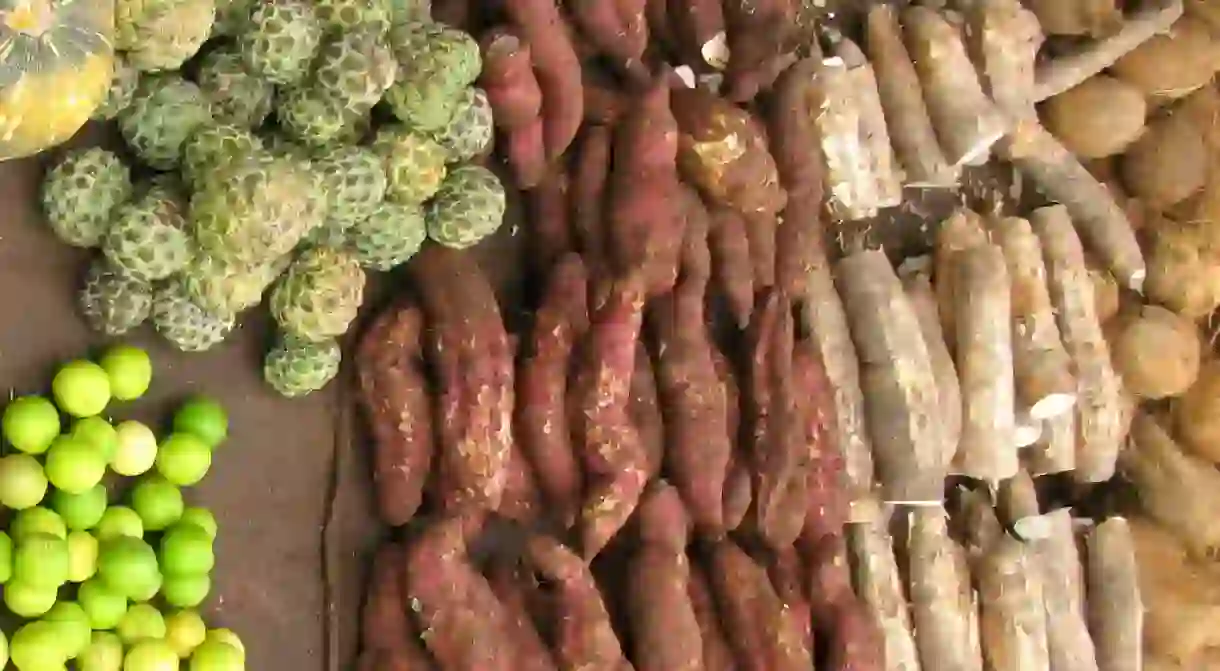Kenyan Dishes Everyone Should Try

Kenya is famous for its long-distance Olympic runners, stunning beach resorts and thrilling safari excursions; however its diverse array of simple and affordable local eats are just as exciting. Incorporating the spices of the early Arab settlers, the tastes of the East African Indian railway workers and the sweet offerings of the Swahili coastline, the local food scene is rich and delicious. Here is our pick of the Kenyan foods you can’t miss.
Nyama Choma
Literally translated as ‘burned meat,’ nyama choma is a local delicacy of chicken, beef or goat slow-cooked over hot coals until the meat is so tender that it melts in your mouth. The meat is often sourced locally, seasoned with salt and left to cook in its own juices. Roasted goat is the local favorite accompanied with a hot and tangy kachumbari, a relish of tomatoes, onions, fresh coriander and lime, and served with plain rice.

Ugali na Sukuma Wiki
The quintessential Kenyan staple, there is not a single local who hasn’t indulged in this dish. Ugali is made of coarse, white, maize meal, mixed with hot water and stirred over a coal fire until a cake forms. This hearty dish is accompanied by the vibrantly green leaf sukuma wiki, similar to kale, fried with sweet red onions, tomatoes and seasoning. The two are enjoyed best when eaten with the hands, ripping at the ugali and molding over a mound of sukuma wiki.
Roasted Makai
With maize grown abundantly in the rural areas, it comes as no surprise that makai, or roasted maize, is found almost on every street corner. Look out for a lone vendor towering over a makeshift barbecue and you’ll be sure to find this delicious, simple and affordable snack at your fingertips. An array of white maize is roasted and charred on a wire mesh, protecting them from the flames of hot coals. Finished with a few licks of a half-moon lime dipped in a feisty chilli salt, the maize is cleverly wrapped up in its original green husk so it can be devoured piping hot.
Mandazi
This is a sweet, sugar-coated doughnut most often savored at early-morning school breaks. Infused with delicious hints of cardamom and sweet coconut milk, mandazi is found generously covered in icing sugar. Available at your nearest kiosk, these treats are served by the bagful.
http://instagram.com/p/BKSqLknDc_J/?tagged=mandazi
Dumo Kachri
Does the idea of Zebra crisps tickle your fancy? Alongside the offering of roasted maize, a select few vendors dare to spend their days frying these batches of beautifully brown- and white-striped crisps. Thankfully no zebras are harmed in this process. Instead local arrowroot, or dumo, is thinly sliced and fried to reveal its beautifully decorated interior. Seasoned simply with salt, these savory delights go super-crispy and take on an incredible nutty flavor.
Chicken Biryani
A blend of subtle Persian and Indian spicing, chicken biryani is one of the most difficult rice dishes to master. Originating from the Middle East, this dish has found its own virtuous variations in East Africa at the hands of the early Arab and Indian traders on the Southern coastline. You’ll find warming blends of spice, dried fruit and tender chicken pearled into basmati rice. Nairobi has a plentiful supply of Indian and Swahili restaurants that offer their take on this dish, but you won’t find better than at the food court in Nairobi’s Diamond Plaza.

Sweet Maharagwe na Chapati
Today, maharagwe is a traditional sweet Swahili stew made up of red kidney beans, coconut milk and cardamom that incorporates the warming tastes of Kenya’s Indian heritage. With the abundance of coconuts growing in southern Kenya, many women choose to make their own coconut milk, using a hand-carved coconut grater to break down the meat, before pounding and straining it to produce this sweet, creamy liquid. Mixed with the kidney beans, the stew achieves an incredible thick and buttery consistency. Make sure to have several portions of hot chapati at hand to mop up every last bit of the stew!
Githeri
Githeri is a hearty bean stew adopted from the Kikuyu tribe, and popular amongst locals. Cooked on the street in large aluminum pots over jikos, a combination of beans, steak, beef stock and potatoes are slowly simmered in tomato gravy. Served by the bowlful with either white bread or Swahili chapatti, this stew makes for the ideal working man’s lunch. There is no better place to sample it than at a bustling City Market, a local farmers market in Parklands.














